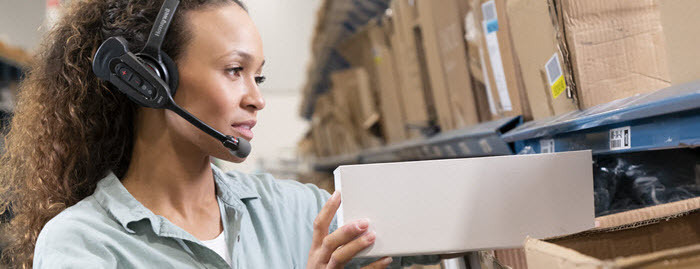A glance behind the curtain: how are your scan screens built up?
29 Apr 2021
5 min read
When goods of your customers enter your warehouse, or when they are relocated, you want to be able to retrace it in your system. So, how do you register this? Easy! By using scanners. For logistics service providers is the use of scanners almost indispensable. Not only can you trace movements in your warehouse, you can also regulate order pick activities and control in- and outbounds. Do you use our scan solution? Then all scan data is directly registered in your WMS, which gives you realtime insights in your warehouse activities. To improve the support of your own processes, it helps to know how this works. Therefore, we explain in this blog how the scan screens are built up, to make sure you are in control of your screens and processes yourself.
App Platform vs Telnet
First things first. Whether you use the App Platform, which shows your scan screens in a web browser, or you scan via a Telnet connection; setting up the screens is done the same in Business Central. The difference? The presentation of the screens. With the so called Telnet screen you operate with keys on the device. With the App Platform, it is also possible to make choices by clicking on your own touchscreen device, such as a smartphone or tablet.

Telnet home screen

App home screen
The structure of the scan screens
When an error occurs in your screen, you can investigate the error with the help of the error message. However, is there no error message, but the screen shows different information than expected? Then it is important to know how the screen is built up. In this way you can dive into the set ups and make sure the screens are configurated correctly. By doing so, you can continue your processes in no-time.
In 3PL Dynamics, you define the screens the employee sees on his or her screen. You can find this under ‘Scan view list’. When you navigate to these settings, you see that defining a screen consists of four elements.
1. General
2. Lines
3. Actions
4. App properties
The structure of the screen determines the logic that is executed, which is defined with ‘General’ and ‘Lines’. This also happens in this order. Actions will only be executed on the moment a button is clicked. The ‘App properties’ are only meant for the App Platform. These determine what buttons you can find in the grey bar on the bottom of your screen. Actions that are linked to these buttons are also defined in ‘Actions’.
General
In the general fields, you find attached functions (1). These will be executed first in the process. After that, data from the field ‘Table no.’ and ‘Table where’ is drawn. In the field ‘Table no.’ you choose from what table you want to use the data and which conditions these must meet. In the field ‘Table where’ you can give fixed or variable filters. These filters can be set up with the session variable. The value of the session variable can also be added to an earlier tab or to attached functions.

Note: session variables that are entered in lines, cannot be used with attached functions or ‘Table where’, because these are then empty or contain older values.
Lines
The lines in the screen set up is executed from top to bottom. Within one line, the next steps are executed:
1. Execute attached function(s) (regardless the type of line) (1)
2. Read and show the field values (only when ‘Type’ = ‘Field’) (2)
3. Fill field value in session variable (only when ‘Type’ = ‘Field’) (3)
4. Show session variable ‘only when ‘Type’ = ‘Session variable’)

Attached functions
In an attached function on the line, you cannot use the value of a file the session variable is used in. If you need the field value of a line in an attached function, you must define the attached function in the line below.
Session variable
You can fill session variables with field values, but you can also fill these directly with the help of a function. When showing this value, an attached function is allowed on the same line. The function is executed, the session variable is filled, and then the value is shown.
Data repeater
With the type ‘Data repeater’, a list of data can be shown. This is based on the same rules for the order. The only exception is an attached function for a line like ‘Type’ and ‘Numbering’. These are executed when you choose a line with a number (Telnet) or by clicking on the line (App Platform).
Actions
Finally, the actions. Attached functions are only executed on the moment you press a defined button (1). After that, based on the action, a follow up action is executed.

More information about scan screens
Do you want to learn more about the structure of your scan screens? Or can you use a little help setting them up? Mail to support@elevate-it.be and start immediately.







